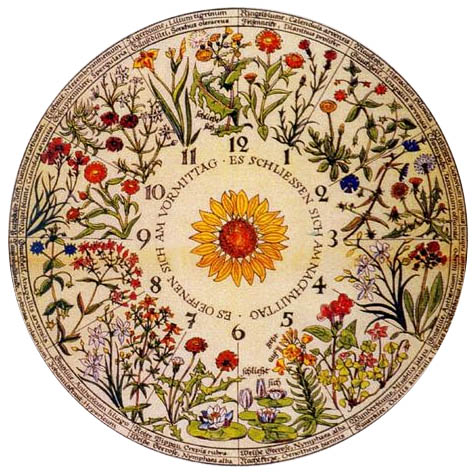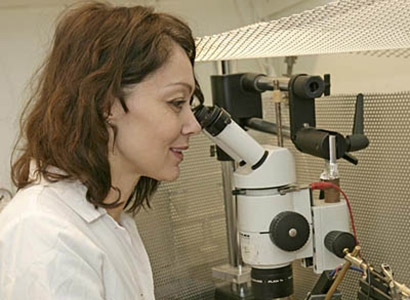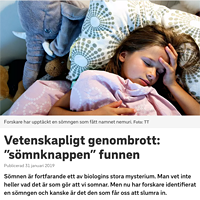Keeping time: essential for all living organisms
Biological time-keeping is evolutionary probably one of the oldest features in living organisms. Biological clocks exist in humans, animals, plants and even cyanobacteria (“blue-green algae”), which indicates how important it is for all living organisms to adjust their activities to the earth’s rotation around the sun and to optimize physiological and cellular functions to a certain time of the day.
Already during the 18th century the French scientist Jean-Jaques d’Ortous de Mairan showed 1729 that the Sensitive plant, Mimosa pudica, expressed a daily rhythm in opening and closing the leaves, even in the absence of sunlight. Also Carl von Linné observed the same phenomena in many other plants, giving rise to his hypothetical “Flower clock” 1751, which was based on the fact that different plants open and close their leaves at specific times of day. Linné proposed that the time of day could be determined by observing which plants had opened and closed their leaves. Although the “Flower clock” could never be properly used, these observations show that daily rhythms were detected and observed several hundred years ago.

Linné's flower clock
The molecular clock
How organisms generate these rhythms was not known until the late 1980s and early 1990s, when Jeffrey Hall, Michael Rosbash and Michael Young identified and described a molecular clock in the fruit fly Drosophila. For this finding the three scientists were awarded the Nobel Prize in medicine or physiology 2017. The principle in plants and animals is the same: the clock consists of a self-regulatory molecular loop including specific “clock genes” and their protein products. When the clock genes are activated, they produce clock proteins that accumulate in concentration. Once the clock proteins reach a certain concentration, they inhibit the clock gene transcription. Later the proteins are degraded, the inhibition is lost and the gene transcription and loop can start all over again. This cycle takes around 24 hr. -> watch the molecular clock live here.
Circadian rhythms and health
Most organs in the body, if not all, contain a clock. For instance, the liver has a rhythm that is highly influenced by food. Other examples of clock organs are the heart, lung and the skin. A structure in the brain hypothalamus, the suprachiasmatic nuclei (SCN), contains a master pacemaker that coordinates the body clock rhythms the body. The SCN receives direct light signals from the eye via the optic nerve, and in this way the brain determines the time of the day. The brain clock in turn sends signals to the other body clocks and synchronizes the timing system. The mammalian circadian system has been described as an orchestra with a conductor, where the body clocks represent the different instruments in the “orchestra” and the SCN represents the head “conductor”. When the body clocks come out of synchrony with each other the individual experiences physiological malaise and discomfort. One such example is jet lag, which occurs after traveling rapidly across time zones, and causes the body clocks to react with different speeds to the new environment, resulting in a disturbed phase-relationship among the body clocks. If similar conditions occur during a very long period of time and disturbed rhythmicity becomes chronic, such as regular shift work, there is an increased risk for obtaining diseases such as cancer, diabetes, cardiovascular disease and depression. Stabile internal time-keeping is in other words essential for our health.
-> read more about the cells that keep our body clocks ticking
-> read more about stress and the circadian clock





